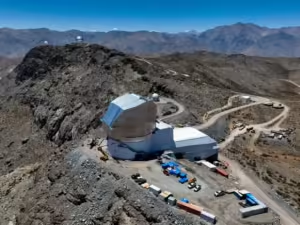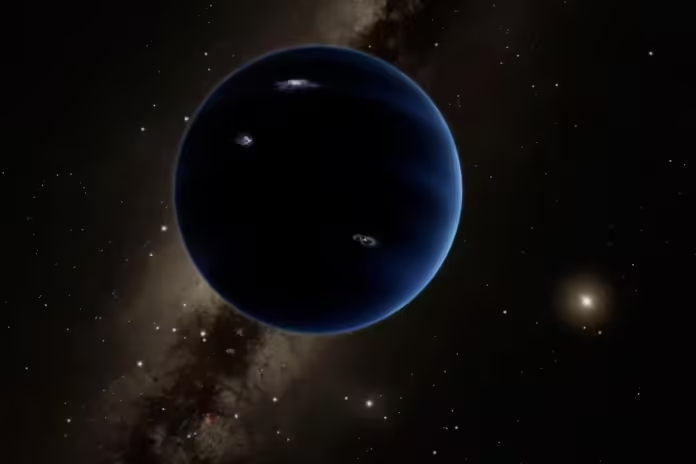Far away in our solar system, out beyond Neptune and even further than that, there is a whole chunk of space that still remains largely mysterious. It can be tempting to think – in an era when we can examine planets that are thousands of light years away – that our own planetary neighbourhood is conquered and charted.
But it is not. Those “extreme trans-Neptunian objects”, or ETNOs, lie 250 times as far away from the Sun as we are. (That’s close by compared to the Oort Cloud, a theoretical shell of objects as much as 200,000 times as far away from the Sun as we are.) Those ETNOs are astonishingly distant, and we know very little about them.
What we do know, however, seems a little odd. They seem to have a tilted orbit, and exhibit other unexpected behaviour. They were all clustered together in a way that wouldn’t normally be expected.
Some researchers say that might be the result of simply not knowing very much about them, since they are so far away and hard to observe: lots of things look a little odd in the dark.

But some researchers – notably Konstantin Batygin and Michael Brown from the California Institute of Technology – argue that their strange orbits are really a consequence of a whole different object: Planet Nine.
That, they say, is another planet that seems to be pulling those orbits around. While we have never been able to see it directly, they argue that it can be inferred from its effects. Those effects suggest that it might be as much as 10 times as big as our own Earth, and hovering about 500 times as far away from the Sun as we are.
Yet more of those effects were revealed recently, when Batygin published a new paper that he claimed offered “the strongest statistical evidence yet that Planet Nine is really out there”. It looked at a set of objects that astronomers had previously largely ignored because they moved oddly – and suggested that they were moving oddly because of another planet.
It may seem odd that we can know so much about distant planets when those in our back garden remain a mystery, and we don’t even know if they exist at all. In 2022, for instance, researchers announced the discovery of K2-2016-BLG-0005Lb – which stands 17,000 light years from Earth.
But it helps that those planets are far away, because they have their own suns. Most exoplanets are detected by “transits”, or the brief dip in light that occurs when they move in front of their stars. In some ways, Planet Nine is so hard to see precisely because either is nearby, because of our cosmic nearsightedness.
It’s not for want of trying, though. Astronomers including Batygin and Brown have been using our large array of telescopes on Earth to try and spot that distant planet, but have so far failed. That’s not necessarily surprising given that it is so far away from the Sun, and so dark.
We might be able to spot it soon, or at least learn more about it, thanks to a huge telescope currently being assembled in Chile. The Vera C Rubin Observatory is being constructed on top of a mountain, almost 2,682 metres up.
It has been under construction for just under 10 years, but the “first light” is expected to hit it this summer, and it will start its full operations next summer.
When it gets to work, it will be scanning the whole sky – with the aim of creating a “Legacy Survey of Space and Time” that will help us understand the behaviour of objects in the sky. That could finally shed some light on the mystery of Planet Nine.
Planet Nine is not Planet X, though the two look remarkably similar. Planet X – which believers sometimes call Nibiru – is the belief that there is another planet lurking in our solar system that will collide with Earth sometime in the near future.
It sometimes borrows from scientific research about Planet Nine, but then goes much further: astronomers roundly reject Nibiru, and there is no evidence that any kind of object will collide with Earth any time soon. (Believers sometimes reject that as a Nasa coverup.)
But whatever you call it, there is clearly something alluring about planets beyond Neptune. It might be something to do with wanting more out of our planetary neighbourhood: if there is not another world in our solar system, then the nearest planet beyond Neptune is Proxima Centauri b.
That’s 4.2 lightyears away; it’s hard not to feel a little lonely. But, if the research into Planet Nine soon comes good, we might realise we’re not quite so alone.




